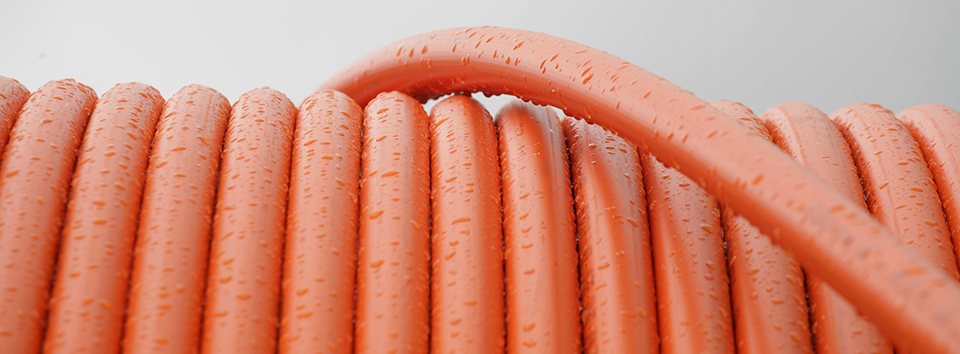Pull Tape & Rope

Pulling Cable into Conduit
We Stock the following Pull Tapes and Ropes:
- 1/4" Hollow Braid Polypropylene
- 900# Unmarked Flatline Tape
- 1,250# Polyester Lubricated Pulltape
- 1,800# Polyester Lubricated Pulltape
- 2,500# Polyester Lubricated Pulltape
- 1,250# Kevlar Blend Lubricated Pulltape
The traditional method of installing cable-in-conduit has been to attach a pull line (or rope) to the cable and pull the cable into the conduit. This placement method requires equipment to do the actual pulling, to apply lubricants to reduce friction, and devices that measure the amount of tension being applied to the cable. Conduit may be supplied with a preinstalled pull line. This line is either a twisted rope or a woven tape. These pull lines come in a wide variety of tensile strengths that range from 500 - 6000 pounds-force. Pull lines are also available pre-lubricated to reduce friction.
Pull tapes are available with sequential footage marks. This type of tape is useful in determining the progress of the cable pull. Empty conduit would require a pull line to be installed. Blowing a pull line directly or blowing a lightweight line through the conduit using compressed air accomplishes this. This line is then used to pull a pull line or a winch line into the conduit to pull the cable. A winch mechanism with a take-up reel is used to pull the pull line with the cable attached. The winch should have a tension meter to monitor the amount of tension being placed on the cable during the pull. This monitor will reduce the risk of damaging a sensitive fiber optic cable during the pull. Check with the cable manufacturer to determine the amount of tension a cable can safely withstand.
The use of cable lubricants is strongly recommended. Cable lubricants reduce the amount of friction during a pull and therefore allow longer cable pulls and reduce the risk of damage to a cable during the pull. When the cable is attached to the pull line, it is recommended that a swivel be used between the two. This swivel will allow the cable and pull line to move independently in the conduit during the pull and prevent unnecessary twisting of the cable or pull line.
On very long pulls the use of mid-assists is common. Mid-assist equipment can be as simple as a person pulling on the cable midway or it can be a capstan type device that provides a controlled amount of pulling tension to the cable to reduce the tension on the cable and increase the possible length of the pull. If the conduit is in a manhole, protective devices are needed to guide the cable into the manhole and then into the conduit. These guides protect the cable from scraping on metal or concrete surfaces that could damage the cable sheath.
Pull-line construction also plays a significant role in burn-through. Polypropylene ropes or even HDPE pull-lines exhibit low COF at low sidewall loads, but rapidly cut through both PVC conduit and PE conduit when the load increases. The tendency for these materials to soften, combined with high structural similarity (to PE), limit the pull load range over which they may be used. Polyester and polyaramid pull lines, particularly in tape form, offer greater protection from burn through.

